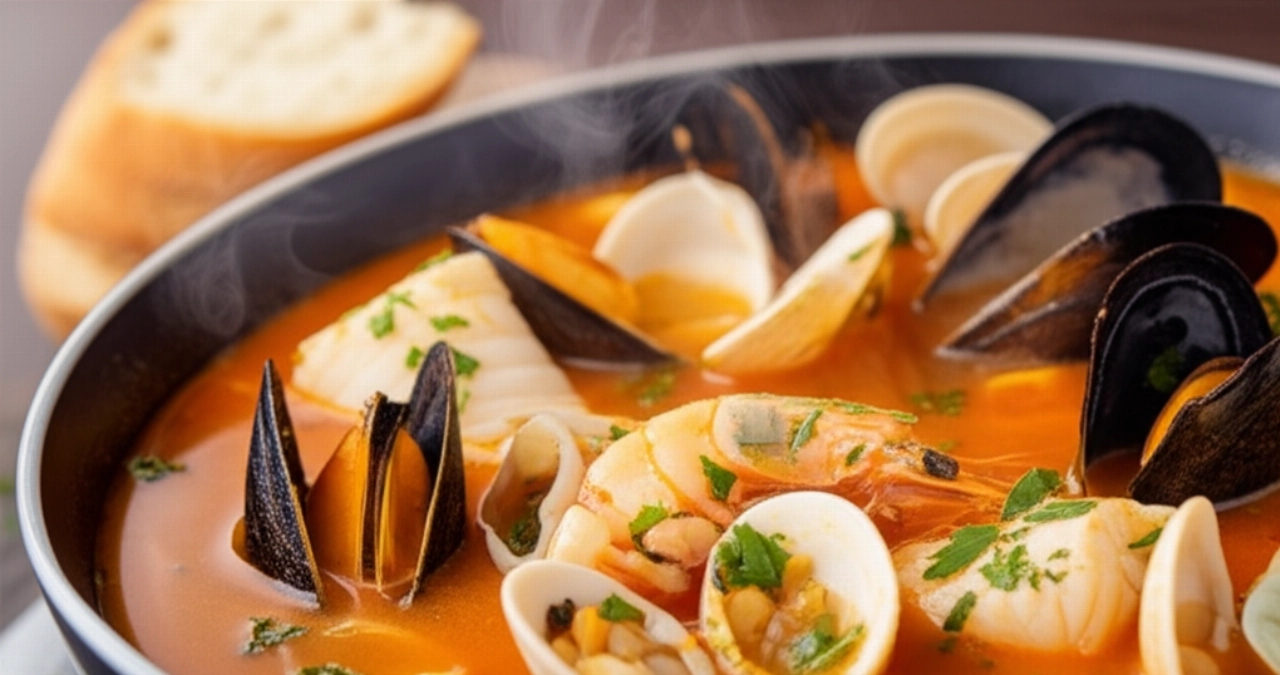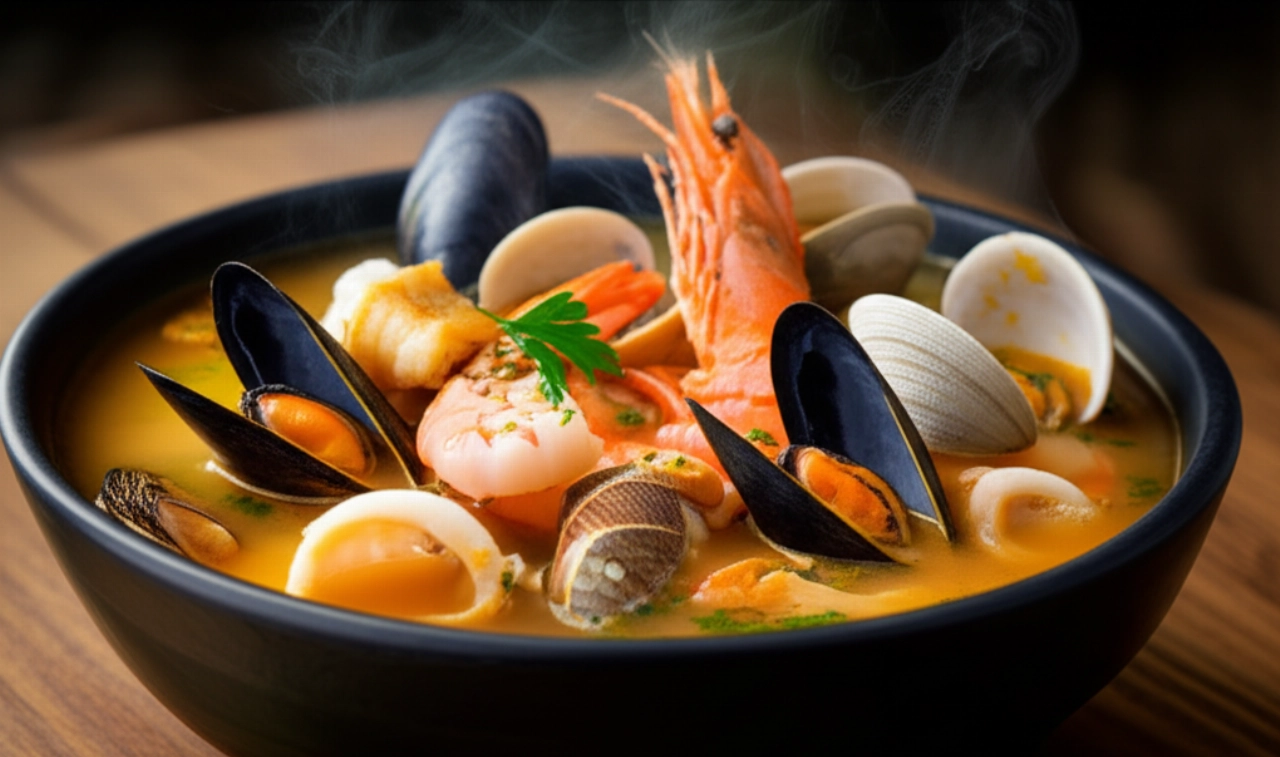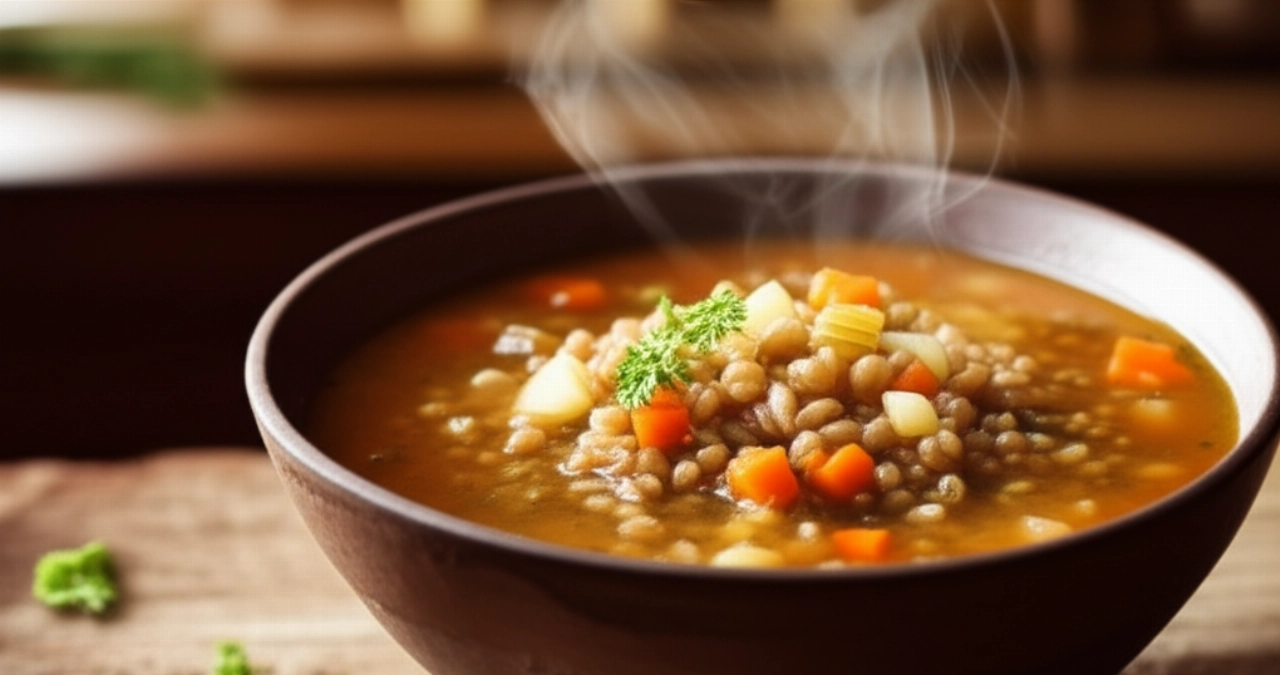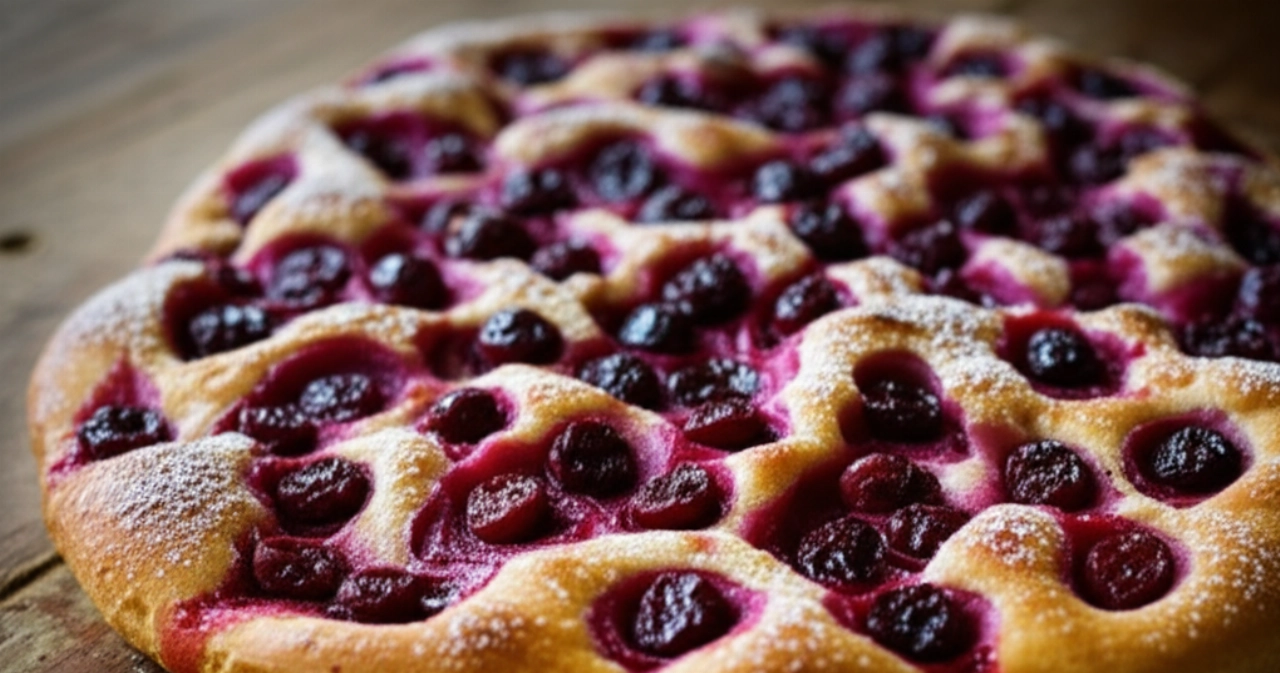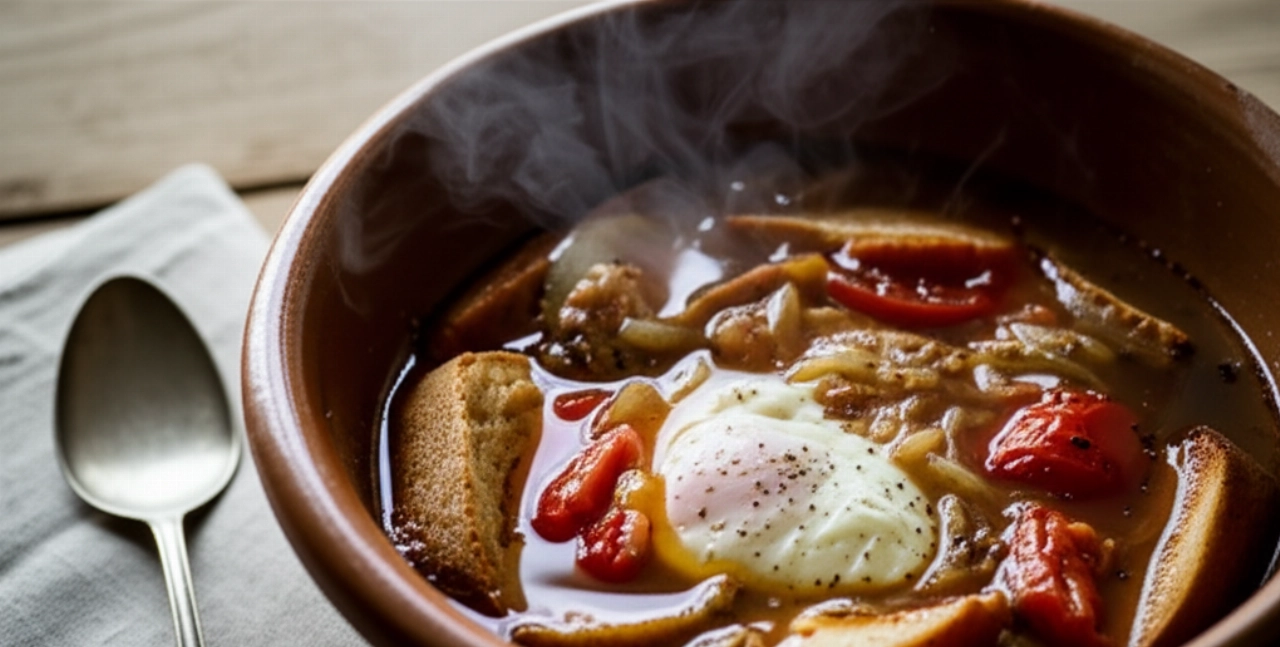There's a scent that speaks of the sea, of history, of conviviality. A scent that envelops you and takes you straight to the docks of Livorno port, where fishermen once created a dish from the day's catch that is much more than a simple soup: Cacciucco alla Livornese.
But how many times have you tasted a Cacciucco that wasn't quite right? Perhaps too watery, lacking flavor, or with fish that fell apart? Finding the authentic recipe, one that respects tradition and guarantees a result worthy of applause, can seem like a challenge.
Make yourself comfortable. On this page, you won't just find a list of ingredients, but the definitive guide, full of tricks and tips, for preparing the true Cacciucco alla Livornese. A dish that will make you feel at home with every spoonful, and that will leave your guests speechless. Success is guaranteed, straight from someone who has been preparing Cacciucco for a lifetime!
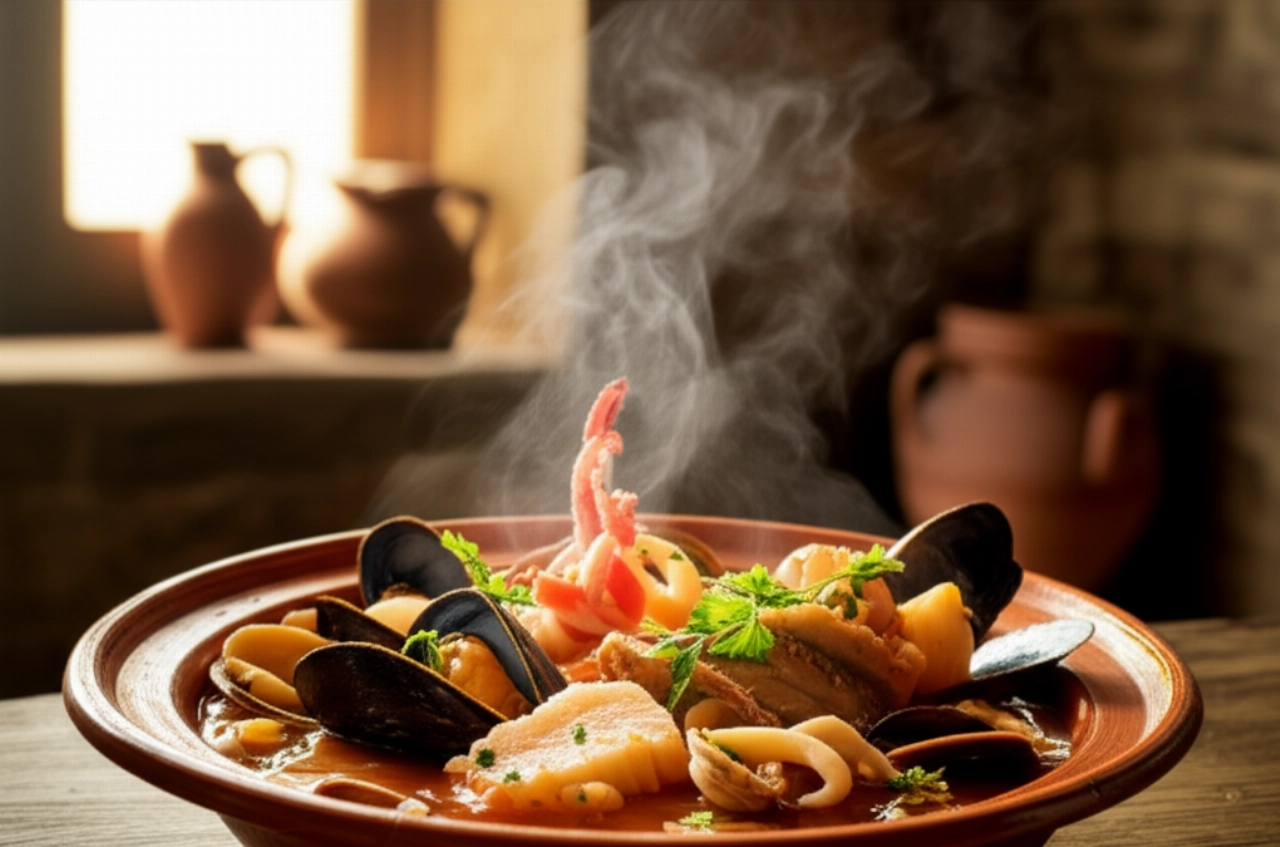
Ingredients for an Authentic Cacciucco: The Choice That Makes the Difference
The secret to a great Cacciucco begins with the quality and variety of ingredients. It's not just a simple list, but a thoughtful selection, because each element plays a fundamental role in the symphony of flavors you're about to create.
- Fresh and Varied Fish (the heart of the dish): Don't skimp on quality! For a perfect Cacciucco, you'll need at least 5-6 different types of fish. Think of soup fish like scorpionfish, gurnard, weever, dogfish, monkfish for the base and deep flavor. Then add shellfish like mussels and clams, and crustaceans like shrimp or scampi for sweetness and texture. Freshness is everything: the fish should have clear eyes and red gills.
- Quality Tomato (the soul of the sauce): A good, thick, and flavorful tomato passata is essential. Accompany it with a tablespoon of tomato paste to intensify the color and taste.
- Stale Tuscan Bread (the base for dipping): Cacciucco is served with slices of toasted Tuscan bread (unsalted) rubbed with garlic. It must be stale to best absorb the sauce without falling apart.
- Dry White Wine (the aromatic touch): A good dry white wine, not too aromatic, will be used to deglaze and add depth to the sauce.
- Extra Virgin Olive Oil (the common thread): A quality oil, delicate yet flavorful, is the base of the soffritto and binds all the flavors together.
- Garlic, Chili Pepper, and Parsley (essential aromatics): These are a must! Garlic for the soffritto, chili pepper for that spicy note that "wakes up" the palate, and fresh parsley for finishing.
- Fish Broth (the secret to depth): If you have the opportunity, prepare a fish broth with the scraps (heads, bones) of the fish you'll use. It will make an abyssal difference compared to water or vegetable broth.
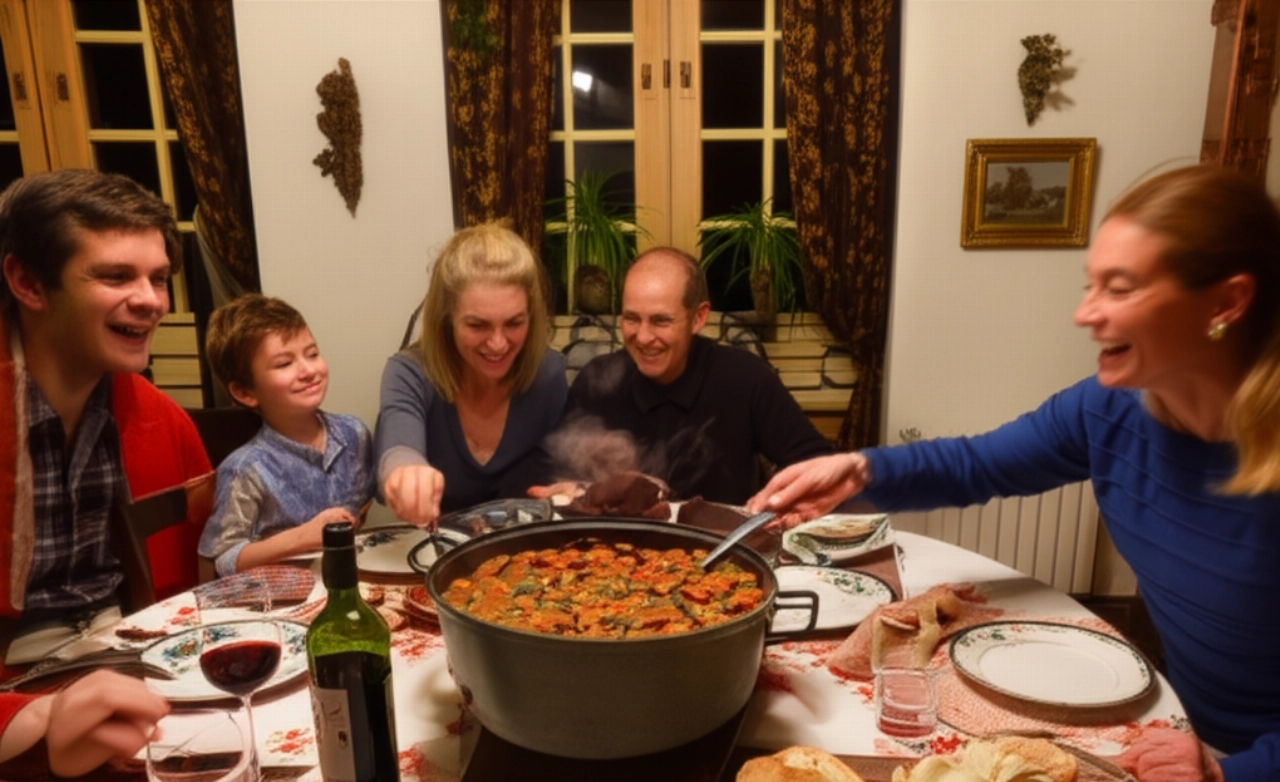
The 3 Common Cacciucco Mistakes (and How to Avoid Them for Guaranteed Success)
Preparing Cacciucco is an art, but also a journey where it's easy to stumble. Here are the most common mistakes that can ruin your masterpiece and how to avoid them, to guarantee an impeccable result.
- Neglecting the Sauce Base: Many rush and don't dedicate enough time to the soffritto and the initial cooking of the tomato. The soffritto should be slow and gentle; the garlic shouldn't burn. Once added, the tomato should simmer for a long time with the broth to create a thick and flavorful base. Patience is the secret in this initial phase.
- Adding All Fish at Once: Each type of fish has different cooking times. If you throw them all into the pot simultaneously, some will be overcooked and fall apart, while others will remain raw. Remember to add the more resistant fish first (monkfish, dogfish) and the more delicate ones (shrimp, mussels, clams) only in the last few minutes.
- Using Too Much Water or Bland Broth: Cacciucco is not a watery mess! It should be thick and enveloping. If you use too much water or flavorless broth, the result will be watery and disappointing. Prepare a good fish broth with the scraps, or at least, use less liquid and let the sauce reduce well.
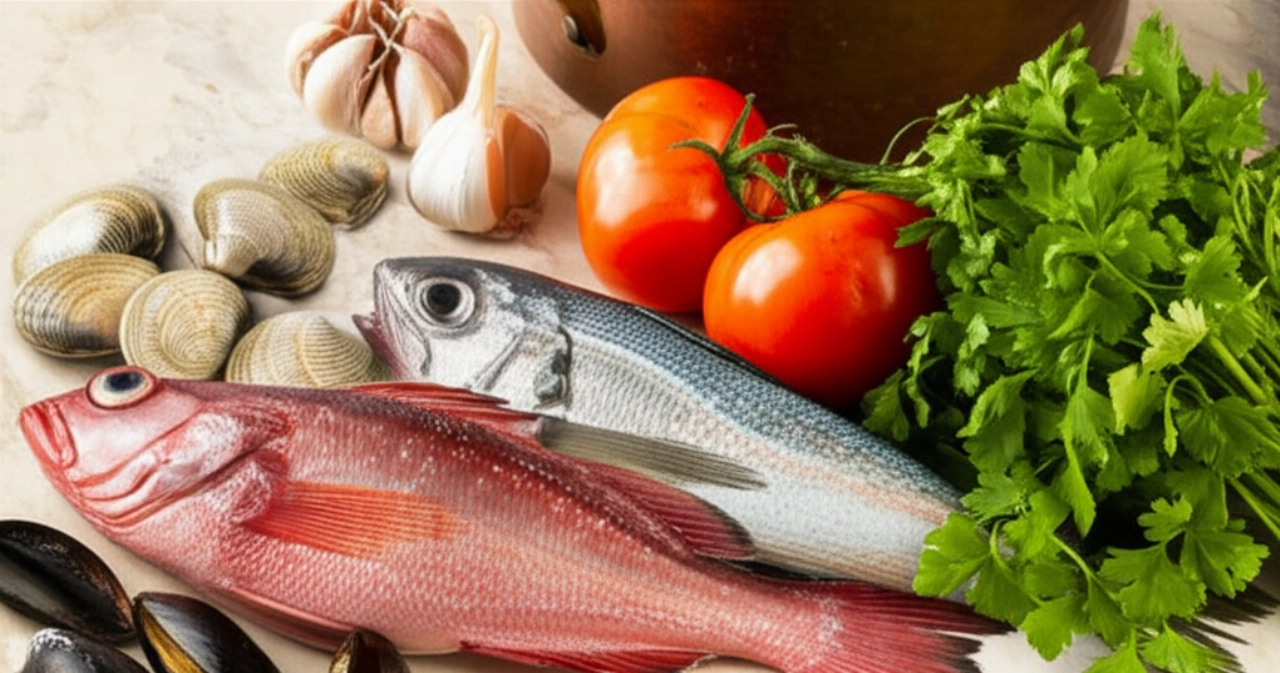
The Extra Touch: The Tip My Grandmother Passed Down to Me for an Unforgettable Cacciucco
My grandmother, a true Livornese, always said that Cacciucco is like a symphony: each instrument (each fish) must enter at the right moment to create perfect harmony. But her true secret, what made her Cacciucco legendary, was a small gesture few know about.
After browning the more "robust" fish (like monkfish or dogfish) in the soffritto, before adding the tomato, she would generously deglaze it with a good glass of dry white wine and let the alcohol evaporate completely. Then, with a wooden spoon, she would scrape the bottom of the pot well, collecting all those precious caramelized "juices" the fish had released. This process, called "deglazing," concentrates the flavors and makes them incredibly deep, giving the sauce a complexity it would otherwise lack. It's a step that takes an extra minute, but it transforms a good Cacciucco into an amazing Cacciucco!
Let's Prepare Cacciucco alla Livornese Together: The Step-by-Step Guide
Ingredients (for 4-6 servings):
- 1.5 kg mixed fish for Cacciucco (e.g., scorpionfish, gurnard, weever, dogfish, monkfish, cuttlefish, mussels, clams, shrimp, scampi)
- 400g quality tomato passata
- 1 tablespoon tomato paste
- 2 cloves garlic
- 1 fresh chili pepper (or dried)
- 1 small red onion
- 1 stalk celery
- 1 small carrot
- 1 glass dry white wine
- 500 ml fish broth (or hot water)
- Extra virgin olive oil q.b. (as needed)
- Salt and black pepper q.b. (as needed)
- Fresh chopped parsley q.b. (as needed)
- Slices of stale Tuscan bread
Equipment:
- A large, heavy-bottomed pot (a cast iron casserole is ideal)
- A cutting board and a sharp knife
- A slotted spoon
Instructions:
- Prepare the Fish: Carefully clean all the fish. Scale, eviscerate, and cut the larger ones into pieces. Separate the heads and bones of the "soup fish" if you want to prepare the broth. Clean mussels and clams (tap them to remove sand and discard any open or broken ones). Set aside the shrimp and scampi.
- Prepare the Broth (if making it at home): In a pot, place the fish heads and bones, a piece of celery, carrot, and onion. Cover with cold water and bring to a boil. Skim off impurities, lower the heat, and let simmer for about 20-30 minutes. Strain and set aside.
- Start the Soffritto: In a large, heavy-bottomed pot, pour in plenty of extra virgin olive oil. Add the whole garlic cloves (or finely chopped, to your taste) and the chili pepper. Let them gently sauté over low heat until the garlic is golden.
- Add the "Robust" Fish: Begin by adding the more resistant fish (like cuttlefish, dogfish, monkfish). Brown them for a few minutes on all sides until they have a nice color.
- Deglaze with Wine: Pour in the dry white wine and let the alcohol evaporate completely over high heat, scraping the bottom of the pot well with a wooden spoon to retrieve all the flavors.
- Add the Tomato: Add the tomato passata and tomato paste. Mix well.
- Cook the Base Sauce: Add a ladleful of fish broth (or hot water) and bring to a boil. Lower the heat, cover, and let simmer for at least 20-30 minutes, stirring occasionally, until the sauce has thickened and the flavors are well combined. Season with salt and pepper.
- Add the Rest of the Fish: At this point, add the "soup fish" (scorpionfish, gurnard, weever) and shellfish (cuttlefish if you haven't added them before). Continue cooking for another 10-15 minutes, or until the fish is almost cooked.
- Final Minutes: In the last 5 minutes of cooking, add the shrimp, scampi, mussels, and clams. Cover the pot and cook until the mussels and clams have opened and the crustaceans have turned pink. Discard any shellfish that haven't opened.
- Prepare the Bread: Meanwhile, toast the slices of Tuscan bread and rub them vigorously with a clove of garlic.
- Plate and Serve: Serve the Cacciucco piping hot in individual bowls, placing the toasted bread slices at the bottom. Garnish with plenty of fresh chopped parsley.
Tips and Frequently Asked Questions about Cacciucco
Still have some doubts? Don't worry, it's normal! Here you'll find answers to the most common questions to clear up any uncertainty and guarantee a perfect Cacciucco.
- What is the best fish for Cacciucco?
- There isn't one "best" fish, but the key is variety and freshness. The ideal is a mix of soup fish (scorpionfish, gurnard, weever, dogfish, monkfish) for the flavor base, and then the addition of shellfish (mussels, clams, cuttlefish) and crustaceans (shrimp, scampi) to enrich the texture and taste. Ask your trusted fishmonger for the "Cacciucco fish" of the day!
- Can I prepare Cacciucco in advance?
- Yes, in part. You can prepare the base sauce with tomato and the more resistant fish (like cuttlefish or dogfish) even the day before. This will allow the flavors to meld even better. When serving, reheat the sauce and add the more delicate fish (shrimp, mussels, clams, soup fish) only in the last few minutes of cooking. This way, your fish will always be perfect and not overcooked.
- How can I store leftover Cacciucco?
- Cacciucco is also excellent the next day! Store it in an airtight container in the refrigerator for a maximum of 2 days. Gently reheat it over low heat before serving. Keep in mind that some fish might lose a bit of texture, but the flavor will still be delicious.
- Can I freeze Cacciucco?
- Yes, but with some precautions. It's preferable to freeze only the base sauce without the fish. Once thawed, you can add fresh fish and cook it at that moment. If you freeze the complete Cacciucco, the more delicate fish might become rubbery or fall apart when thawed and reheated.
- What can I use instead of white wine?
- If you don't want to use wine, you can deglaze with a little extra fish broth or, alternatively, a tablespoon of white wine vinegar. However, wine adds an aromatic complexity that is difficult to replicate.
There you have it! Now you no longer just have a recipe, but all the secrets to bring a true masterpiece of Tuscan cuisine to your table: Cacciucco alla Livornese. A dish that tastes of the sea, tradition, and love, capable of warming the heart and making everyone feel at home.
Don't be afraid to challenge yourself. Cooking is an act of creativity and passion. But start with this solid base, and you'll see that applause won't be lacking. Prepare this Cacciucco and you'll feel like a true "guardian" of authentic flavors!
Have you tried our recipe? We're very curious to see your masterpiece! Leave a comment below, tell us how it went, or share a photo on Instagram by tagging @CercaRicette.it. If you loved this journey into sea flavors, you can't miss our recipe for Homemade Fish Broth or another Tuscan classic like the Pappa al Pomodoro.
